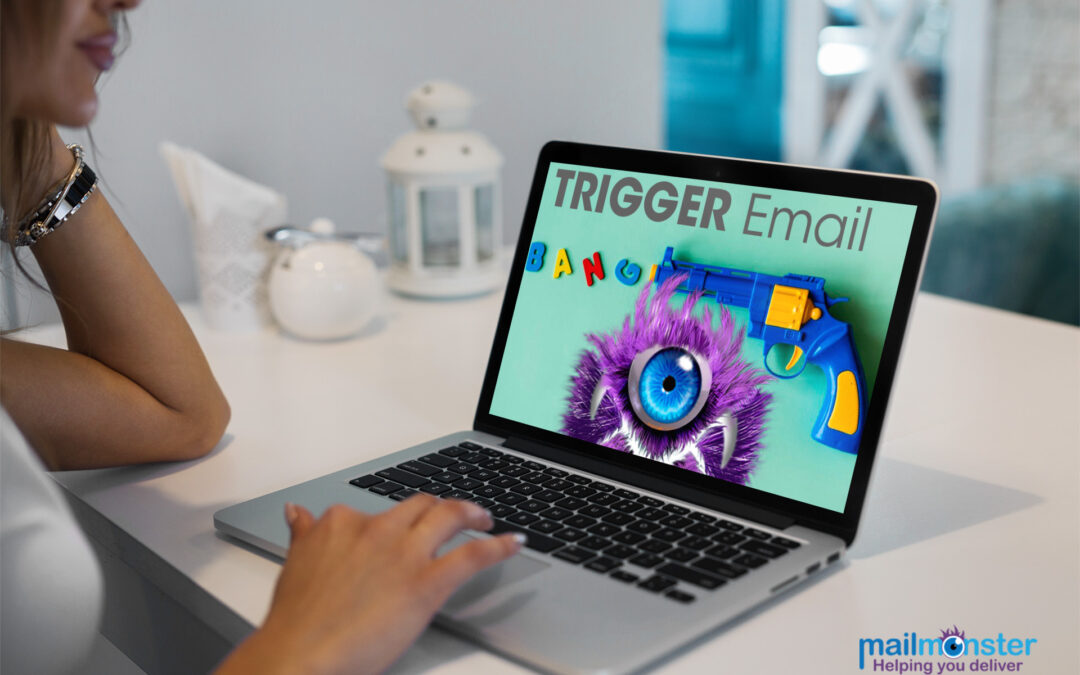The best digital marketers have it very clear: being up to date with new tools is essential to take advantage of all the opportunities to connect with our target. So today I am going to tell you about a very effective strategy: trigger marketing, closely related to email marketing.
Email marketing should not be confused with sending mass messages, much less spam. On the contrary, what you need is to learn how to use this tool to send highly personalized information that reaches the perfect client at the right time.
Therefore, I want to explain to you what trigger marketing is and when we can apply it.
What is trigger marketing?
Trigger marketing consists of triggering messages or notifications at a certain time, in response to an event (event based marketing). The different actions of the user trigger different messages, seeking maximum personalization and above all, reaching the potential customer at the right time to sneak into their head and increase the chances of conversion.
In this type of marketing everything is moved by “events”. An event can be a user action (download an ebook, spend more than two minutes on a specific page of our website, install our app …) or a specific date (Father’s Day, Christmas …). Each of these events generates a personalized response for certain users: for example, at Christmas we will send an email about toys to users who have small children.
One of the most important keys to trigger marketing is automation, through Hubspot-type sites. This allows us to maximize the impact and create very sophisticated campaigns with a minimal investment of time.
Another characteristic to take into account is that although the most typical thing is to talk about trigger email campaigns, this type of marketing is not limited to email. Trigger based mobile marketing is also a trend to take into account and a good way to get the most out of our app.
Trigger email campaigns can be as complex and sophisticated as our strategic creativity allows. As a guide to get started, these are some of the most common “key moments” to launch an action of this type:
- Welcome: a new registration can be the beginning of a beautiful friendship so make your user feel at home! Thanks to the information that he has given you when registering, you will be able to personalize the message with the information and promotions that interest him the most. It is also a good time to offer you a welcome discount. And of course, don’t forget to thank him!
- First actions: before and / or after registering, your new user will take a tour of your website. It is a great opportunity to start monitoring your interests: have you spent more than two minutes comparing products in such a range? Which sections have you visited first?
- Purchase: the first conversion is that key moment in which a prospect finally becomes a customer, so don’t forget to include it in your trigger email campaigns. The basics: confirm that the purchase was successful and remind them of the next steps, eg when to expect to receive their order.
- Loyalty: It is well known that keeping a customer is much more profitable than getting a new one, so let him know that you think about him from time to time. You can offer him a discount coupon for his second purchase, congratulate him on his birthday or inform him of promotions on complementary products.
- Reactivation: this campaign is suitable when a user has registered, but has not returned to your website. Remind him that you are waiting for him and make a proposal that he cannot refuse.
Advantages of Trigger email
- Trigger marketing makes your customer feel special. We are all saturated with massive advertising on the Internet, so personalized messages are remembered and penetrate deeper. Sending emails that adapt to the needs of the user at all times is an example of great customer service that increases satisfaction and the chances of being recommended.
- Even if your user doesn’t convert, the email trigger increases the awareness of your brand. By showing that you care about treating your potential customers well, you have earned them a positive impression and a reminder when they are ready to buy.
- For the brand’s marketing team, automation saves huge time and resources. Thanks to CRM programs, we can make very complex segmentations in a simple way. This way, your team can spend time and energy improving strategies, creating brilliant creatives, and measuring and optimizing results.
- In short, the trigger email achieves greater benefits for your company. Event-based customer communication maximizes conversion opportunities at all stages of the funnel, arriving at just the right time and with the perfect message.
To create your own trigger based marketing strategy, you need to build a few specific capabilities.
- Create a Complete Customer View– First, you need to connect all customer data into one place. Customers engage with your brand across channels. Having an omnichannel strategy in place to connect this data is the first step toward using advanced triggers.
- Determine Which Triggers Matter for Your Business – Second, want to determine which triggers are important to your business. While certain triggers are applicable to all businesses (like shopping cart abandonment), others are dependent on your business model.
- Select a Capable Personalization Partner – Finally, you want a personalization partner who is capable of incorporating customer data and triggers to create personal, relevant messages. Remember you need to clean your email list first (with us you have 100 free verifications) and you can create a great Trigger campaign with tools like MailPipe or Mailchimp
Generating more sales is a dream for every marketer and business. But there are specific ways to generate more leads.
Trigger emails are vital for this process and are highly used for lead generation.

